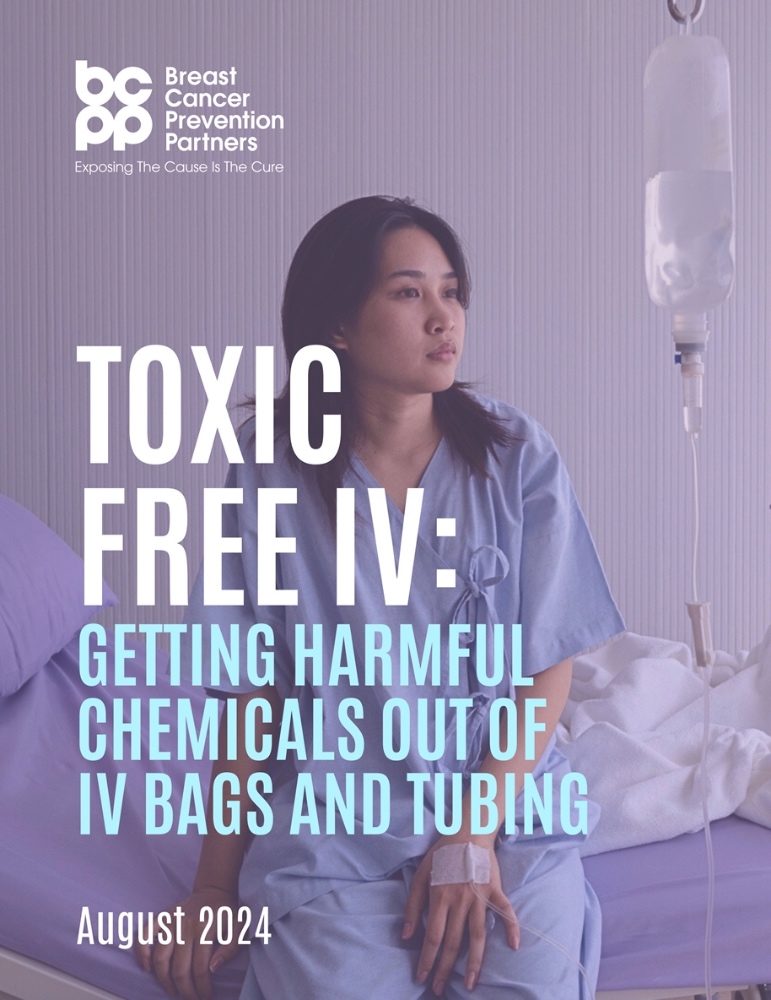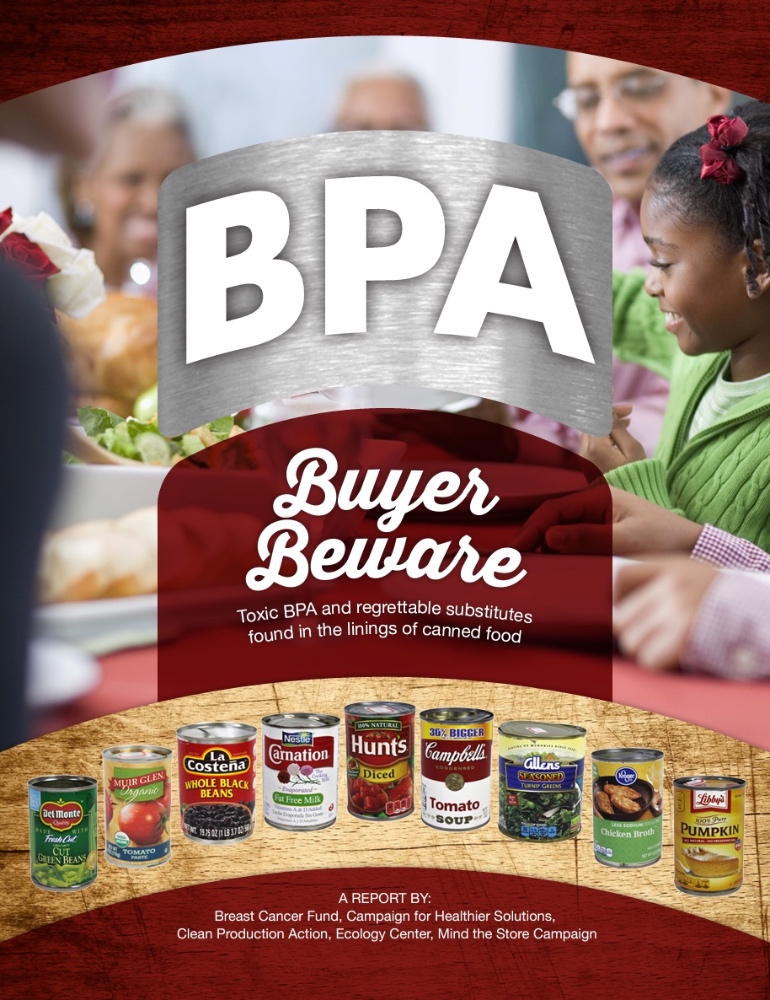Scientific Evidence
Exposing the cause is the cure. BCPP reviews the scientific evidence connecting environmental factors and breast cancer. Science InitiativesRecent Research
We keep track of the groundbreaking scientific research and new findings around the world on the complex relationships between environmental factors and breast cancer.
Surgeon General Calls for Cancer Warnings on Alcohol
The Surgeon General has called for warning labels to be added to alcohol about the cancer risks associated with alcohol consumption. Dr. Vivek Murthy’s report cited studies linking alcoholic beverages to at least seven malignancies, including breast cancer. Adding warning labels would require an act of congress. Read more about breast cancer risks from alcohol.
More Than 400 Chemicals in Plastics Linked to Breast Cancer
Recently, 920 breast cancer-related chemicals were identified on the basis of evidence that they induce mammary tumors in rodents or have specific endocrine-disrupting effects. Nearly half (414) of these chemicals are found in plastics, highlighting how the United Nations (UN) Intergovernmental Negotiating Committee on Plastic Pollution, can reduce the burden of breast cancer and other health conditions. We compared our list of BCRCs to data from the PlastChem project, (4) an initiative by primarily academic and nonprofit researchers to create a database of more than 16 000 chemicals used in plastics. Of the 414 breast cancer related chemicals found in plastics, 98 cause mammary tumors in rodent studies, 188 increase the level of estradiol synthesis, 132 increase the level of progesterone synthesis, and 149 activate the estrogen receptor, all of which are established pathways to breast cancer. Moreover, 160 of these endocrine-active chemicals are also genotoxic, another mechanism for carcinogenesis. Overall, 175 potential breast carcinogens in plastics were identified for regulation and reduction due to evidence that they cause mammary tumors or have robust hormonal activity combined with genotoxicity.
Over 900 Breast Cancer-Relevant Chemicals in Current Use
Chemicals that induce mammary tumors or activate hormonal signaling are likely to increase breast cancer risk. A 2024 study identified over 900 breast cancer-relevant chemicals in current use, including mammary carcinogens, chemicals and ionizing radiation that activate estrogenic or progestogenic hormonal signaling pathways. These chemicals include PFAS, benzenes, bisphenols, phthalates, halogenated and vinyl compounds, drinking water disinfection byproducts, benzidine-based dyes, and pesticide ingredients among others. Many are actively used as pesticide ingredients, but study results were previously dismissed by the US EPA Office of Pesticides, including for the widely used malathion, atrazine, and triclopyr.
Take away: This study released a list of over 900 chemicals related to breast cancer furthering our understanding about chemicals that interfere with our hormone signaling pathways and increase breast cancer risk. These chemicals come from multiple sources ranging from plastics to products to pesticides and this publication guides efforts to reduce exposure to chemicals that cause cancer. Read more about breast cancer risk and pesticides, bisphenols, plastics, water pollution, and air pollution. Join our BCPP actions on bisphenols, PFAS in food packaging, PFAS in textiles, and PFAS in cosmetics.
Using Safer Skin Care Products Results in Marked Cellular Improvements
A new study shows that changing our personal care products supports prevention of breast cancer. Parabens and phthalates are frequently used in cosmetics and personal care products as preservatives and fragrance enhancers. In a recent study, scientists analyzed breast tissue samples from 41 women before and after a month-long avoidance of parabens and phthalates in personal care products. The results showed measurable improvements, including reduced disruptions in cellular pathways linked to cancer. Read more about parabens, phthalates and breast cancer risk.
Skin Care Products May Be an Important Source of Exposure to Phthalates in Children
A 2024 study links the recent use of personal care products like lotions to higher levels of endocrine-disrupting chemicals called phthalates in young children. Phthalates are chemicals used in fragrances and added to plastics to make them more flexible and durable. These chemicals are endocrine disruptors – which means they can mimic, block or interfere with the body’s own hormones. Exposure to phthalates has been linked to impaired brain development, behavioral problems, and may be linked to early puberty. Low-molecular-weight phthalates (LMW) are frequently used in solvents, emulsifiers, and fragrance carriers in personal care products, whereas high-molecular-weight phthalates (HMW) are often used as plasticizers in polyvinyl chloride (PVC) and plastic packaging.
Take Away: Researchers measured phthalates in urine from 906 children and found that children who report lotion use had higher levels of two types of phthalates—one type comes from lotions and one type comes from plastic packaging. Study authors suggest “these results can help clinicians and advocacy groups to advise parents and guardians on product choices and use to limit children’s exposure to potentially hazardous phthalates/replacements.” Read more about phthalates and breast cancer risk. This is why BCPP is working to limit phthalates in personal care products, for example in our Toxic-Free Beauty Act.
Evidence for Widespread Human Exposure to Chemicals in Food Packaging
Researchers recently reported in Nature that of the roughly 14,000 known chemicals in food packaging, about 25% have been found in the human body, in samples of blood, hair or breast milk. Those chemicals include metals, volatile organic compounds, per- and PFAS, phthalates and many others known to disrupt the endocrine system and cause cancer or other diseases. High temperatures can cause chemicals to leach more quickly into food, which is why scientists recommend avoiding microwaving food in takeout containers and avoiding plastic food containers as much as possible.
Learn more about what BCPP is doing to protect people from the toxic chemicals in food packaging.
Cancer Rates are Rising in Women and Decreasing in Men
A 2025 American Cancer Society Report indicates that cancer incidence is rising in women and decreasing in men. In 2021, rates were 82% higher in women than in men under age 50 and these differences persist. Racial inequalities in cancer mortality also persist. Death rates for many largely preventable cancers are at least two times higher for Native American and Black people than for White people.
Exposure to Plastic Pollution in the Air Increases Risk of Breast Cancer
A 20-year study conducted at UCLA with over 48,000 participants found that fossil fuel-based plastic and industrial toxic chemicals in the air were highly associated with breast cancer risk, especially among women of color. Chemicals in the air used to make PVC (#3) and polystyrene (#6) plastic, neither of which are recyclable, were among the chemicals most associated with breast cancer. African American participants exposed to higher vinyl acetate were more than 11 times more likely to develop breast cancer over the study period versus White study participants, whose had five times higher probability with higher vinyl acetate exposure. Higher vinyl chloride exposure increased breast cancer probability among Japanese Americans by seven times versus an increase of two times among White women.
Take Away: Plastic compounds, especially vinyl compounds, have been linked to breast cancer. This study found that 14 of 16 toxic air chemicals studied were associated with higher breast cancer risks. Some of the highest breast cancer associations were at exceedingly low levels of chemical exposure, so these findings show the importance of monitoring and reducing exposures to hazardous air pollutants, even at low levels, to prevent breast cancer. Read more about this study, air pollution, cancer risks from plastics, phthalates, PVC and BCPP actions on plastics.
Browse Research Summaries
We aggregate the scientific research on the link between the environment and breast cancer to advance our ability to address breast cancer risk factors. See summaries of the research in the categories we cover and relevant citations in the links below:
State of the Evidence
We review the scientific evidence linking breast cancer to environmental exposures in our collection of peer-reviewed journal articles, which inform BCPP’s direction and initiatives to prevent breast cancer. Read our most recent report:
State of the Evidence 2017: Update on the connection between breast cancer and the environment
Published in the journal Environmental Health, our literature review examines the compelling body of peer-reviewed scientific evidence linking chemicals and radiation in our environment to the current high incidence of breast cancer.
BCPP-Authored Reports
Thank you for joining BCPP!
Join the BCPP Community
FEATURED VIDEO
BCPP: Exposing the Cause is the Cure
We're preventing breast cancer before it starts by eliminating our exposure to toxic chemicals and radiation.









